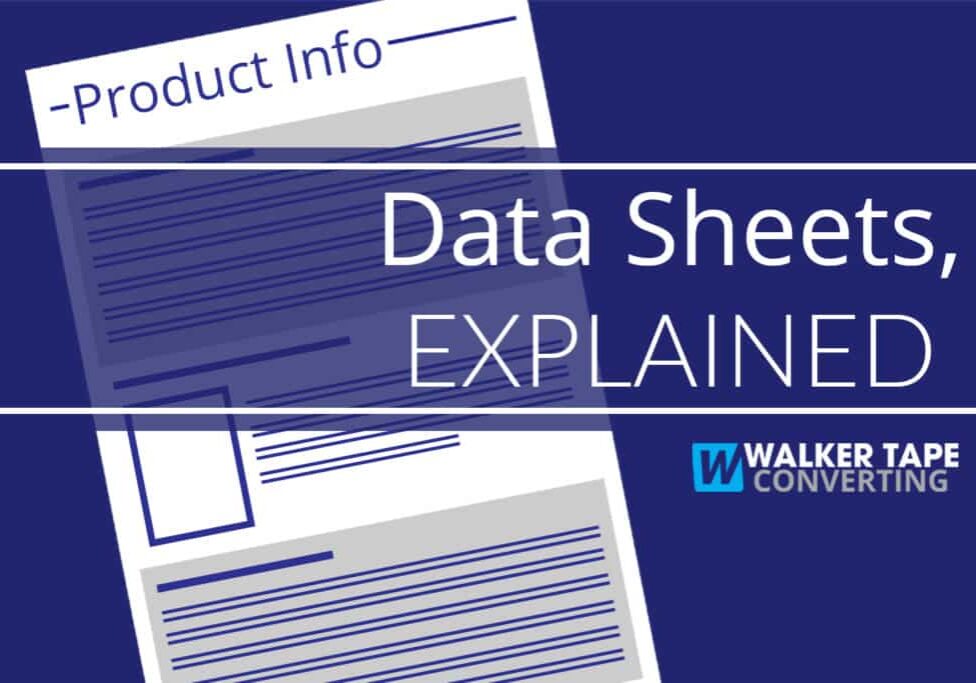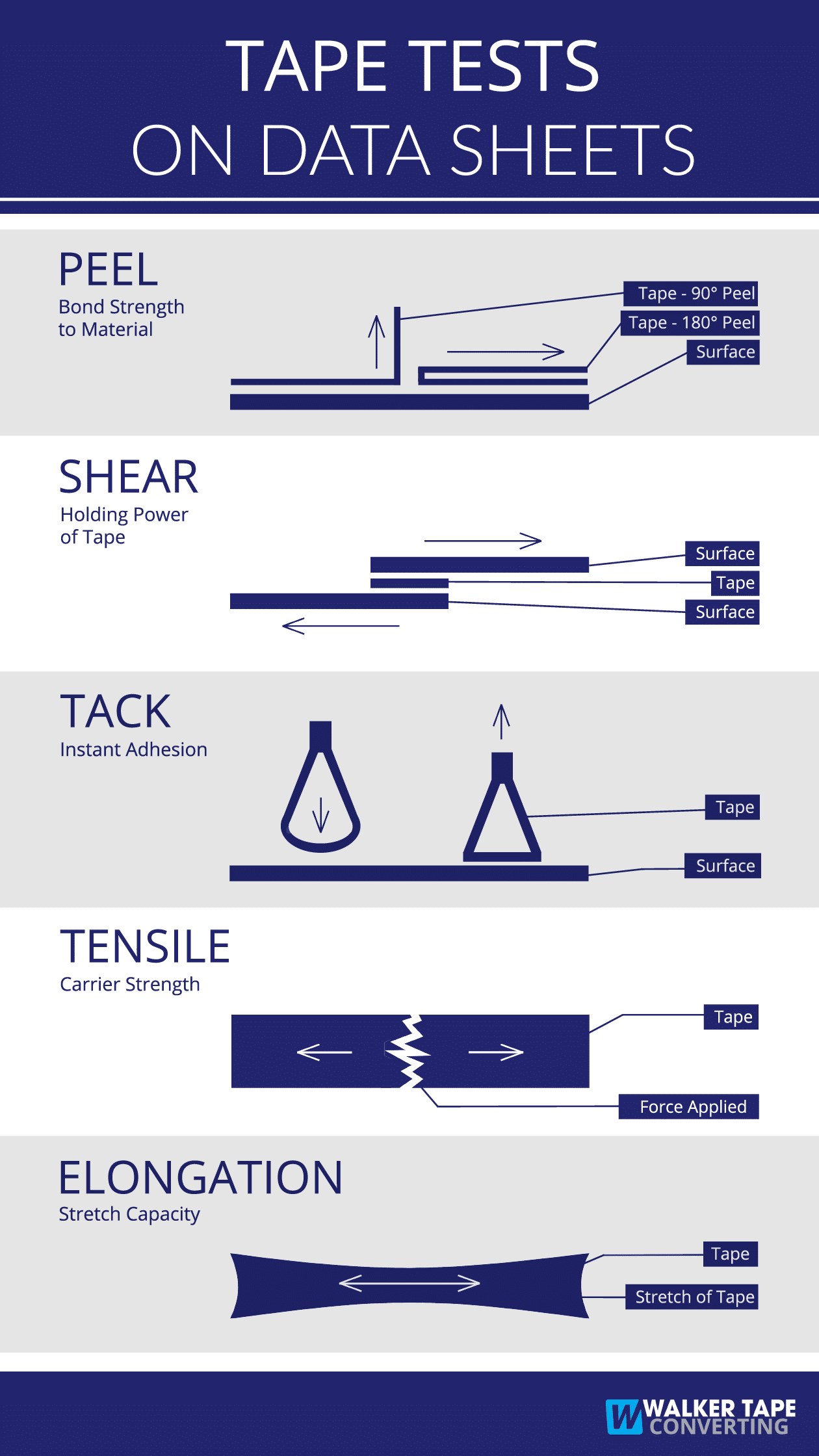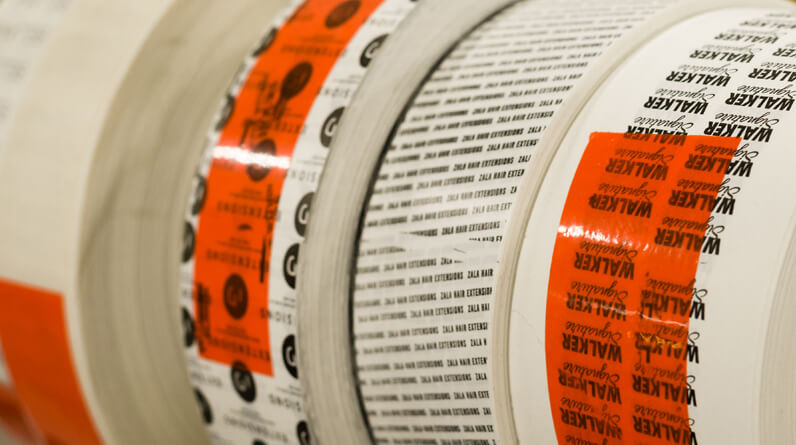
The 3 Parts to a Technical Data Sheet
Tape manufacturers pack essential details about each tape in documents called technical data sheets. They try to keep these files small, usually limiting them to one or two pages.
Such a goal to be thorough and brief leads to a lot of abbreviations and jargon. This stew of insider-speak can get intimidating quickly.
That’s why we’ve made the following walkthrough for you to navigate data sheets easily, breaking them down to three simple parts.
1) The Product Description
Data sheets begin with a summary about the product. These descriptions include name, general kind of tape, features/benefits, and suggested applications.
Name
Highlighting the name here may seem trivial, but tape names sound like part numbers and are just as tough to remember. For example, our walkthrough data sheet is for tesa® 52110 Ultra Low VOC.
Doesn’t quite have the same ring to it as a Chevy Silverado, does it?
Plus, slight variations to tape have equally slight changes in their names. tesa makes another version of this tape, identical in every way but one: it’s two thousands of an inch thinner. That tape is called tesa® 52105 Ultra Low VOC. See what we mean?
This, of course, isn’t a critique of tesa. All tape manufacturers have complex naming systems for organizing thousands of products. Instead of keeping all the names straight, it’s easier to know where to find the name when you need it.
General Type of Tape
Tapes come in various structures and adhesives, and each of these traits serves a specific function. So, it’s good to know which type of tape we’re dealing with.
In our example, just four words pack all this valuable information:
- Adhesive type: Water-based acrylic
- Structure: Transfer tape
Features/Benefits
This section usually reveals itself in bullet points. These set the stage for the next section on applications. They include physical and performance traits about the tape that support why manufacturers focus on certain industries.
Our tesa example emphasizes features such as low VOC, conformability, and bond strength to interior surfaces. All of which apply to the automotive industry that tesa suggests the tape for.
Applications
Like the features section, these are often scannable bullet points. Depending on the tape, these suggestions can range from general ideas (bonding to decorative fabrics) to industry specifics (lamination of foam seals for HVAC).
Sometimes, this portion asks readers to fill in the gaps with their field of expertise. Notice, for instance, tesa doesn’t put “Automotive Industry” in these bullet points. Instead, they talk about using the tape for NVH and BSR purposes. If those abbreviations bewilder us, chances are we’re not the target industry for that specific application.
Data sheets are a BYOK (bring your own know-how) event. Suppliers assume we know which concepts apply to our market. This theory works well for engineers and experts. But for entrepreneurs with innovative ideas for an industry outside their expertise, this section can sound like a word salad.
2) The Technical Data
Now, on to the technical data part of the technical data sheet. Information here dives into specific physical properties and test results of the tape. To keep things brief, suppliers try to limit this part to points relevant to the suggested applications.
This is also usually where we go fumbling for measurement conversion calculators.
Physical Properties
Here, we have materials the tape is made of and the material thickness. Suppliers get detailed with this, breaking down each layer of tape. But since our example is a transfer tape, it only has the one layer of adhesive and a liner.
Test Results for Temperature Rating
Suppliers base these ratings on tests that control heat and humidity levels. The results provide temperature use ranges. Depending on the supplier, they may include ranges for short-term and long-term performance.
Test Results for Bond Performance
When you see “Adhesion to,” this refers to the tape’s bond strength to a material. Suppliers get this data using peel tests. Basically, they peel tape off a material at a 90° or 180° angle and measure the force it takes to do so.
These, like all data sheet tests, are performed with lab equipment in controlled temperatures. Suppliers do peel tests right after placing tape, which tell us if a tape’s strong enough for instant use. They also test three days after placement to measure how strong a tape’s bond is at full strength.
Keep in mind, since force is applied at different angles, 90° peel tests cannot be compared to 180° peel tests. So, if a data sheet doesn’t say, request that information to ensure your comparing apples to apples.
Other Relevant Tape Performance Test Results
Tack
Tack is a tape’s ability to instantly hold to something before applying any pressure. A tape’s tack performance and its adhesive thickness predicts how well it bonds to rough surfaces. Suppliers measure tack in one of two ways.
- Rolling ball test: sending a ball down a ramp and onto tape, the distance the ball travels across the tape decides its tack.
- Loop test: making tape into a loop (sticky side out) and quickly moving it on and off a material. The force needed to separate it decides its tack.
Conformability, Low VOC, & Fogging
Since one focus of our example is automotive, tesa includes ratings for these three performance traits.
- Conformability: a tape’s ability to follow the shape of a material.
- Low VOC: volatile organic compounds that evaporate at room temperatures. The automotive sector regulates VOC levels to keep them low.
- Fogging: condensation on interiors (particularly windshields) due to VOC evaporation.
Shear Resistance
Shear resistance is a tape’s holding power (or its ability to bear loads). This trait is important for double-sided mounting tapes that need to hold things up. With our tesa example being a transfer tape, they didn’t find this trait relevant to include.
Suppliers measure a tape’s shear strength both immediately and three days after application with static or dynamic tests. These tests measure the force needed to make tapes slide out of place.
- Static shear test: heavy weights are added to a material that the tape is holding up.
- Dynamic shear test: Forces pull at opposite ends of overlapping material bonded together by the tape.
Elongation at Break & Tensile Strength
These data points speak to how strong a tape’s carrier is. A carrier, or backing as tesa calls it in the example, is the flexible material that carries a tape’s adhesive. A cloth tape’s carrier is cloth, a masking tape’s carrier is usually paper, and so on.
Since transfer tapes don’t have carriers, our example doesn’t include this information.
- Elongation at break: the percentage a tape can stretch before breaking.
- Tensile strength: the force required to pull apart a tape from both ends.

3) The Additional Information
Often overlooked, this final part includes helpful information such as regulatory notes, application guidelines, best storage practices, shelf life, and warrantees.
Regulatory Notes
Different industries have specific requirements and codes. If you need to find out if a tape meets the standards of your market, you can check this section. When specific codes aren’t listed, be sure to check with the supplier.
Application Guidelines
When included, this section is the first step to improve ROI. These are written as directions on how to get the strongest performance from the tape. Knowing these details allows you to make sure that your processes are set up for success.
Storage & Shelf Life
Like the last section, directions on how to best store your product help your ROI. Plus, having an estimate on shelf life can help you plan orders efficiently.
Disclaimer Fine Print
Fine print is so present on everything that we nearly forget there’s information there at all. But data sheets include important disclaimers about how we should read them as typical averages instead of literal specifications.
Where to Find a Specific Tape’s Data Sheet?
When you have a specific tape supplier in mind, they tend to include data sheets on their product pages. For example, we found the date sheet for this walkthrough by visiting the tesa® 52110 Ultra Low VOC product page on tesa’s website.
However, we find it easier to compare products when you can go back and forth between suppliers quickly. Also, it may make more sense for you to research based on the category of tape rather than the supplier.
In either of these cases, we’ve uploaded data sheets to all our product pages so you can find what you need faster.
As always, when you run across questions during your search for the perfect tape, feel free to ask our experts.




